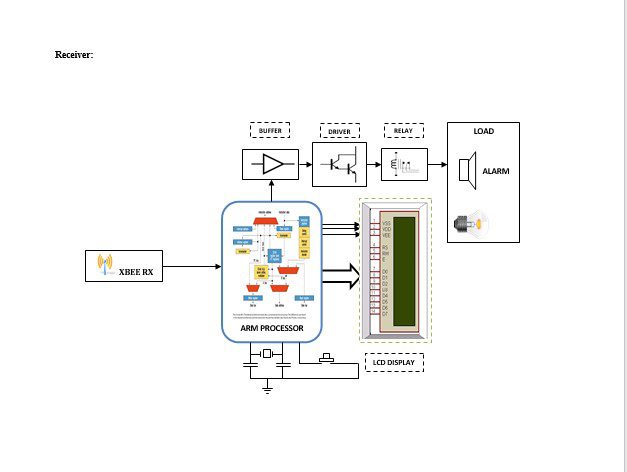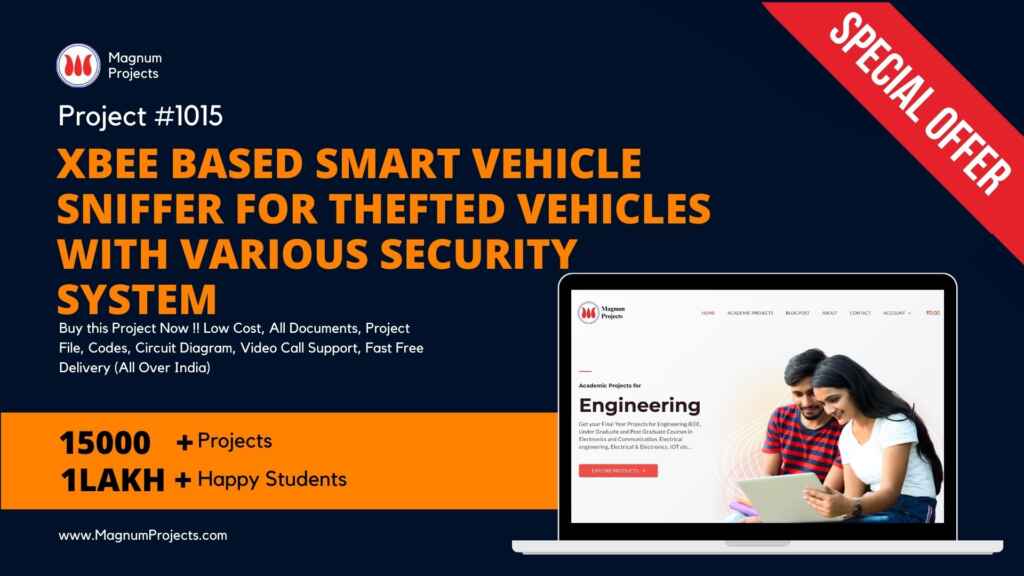Table of Contents
Introduction:


The population of our country has been increasing rapidly which indirectly increases vehicle density and leads to many road accidents. The project aims to minimize road accidents which cause the loss of invaluable human life and other valuable goods. Besides, the provision for the safety of the vehicle is also provided to avoid theft action. In this fast-moving world, new technologies have evolved for every second of our human lifestyle improvement. There have been enormous advancements in automobile technologies already and still to come. Because of these technologies, now we are enjoying the necessary comfort-ness and safety. But there are a lot of accidents happening nowadays. It is because of increased vehicle density, violating rules, and carelessness. The embedded technology is used to prevent accidents due to drunk driving, using mobile phones while driving, etc, If accidents occur in remote areas, the feature of auto-providing the accident area to the emergency centers for help and support is also provided. On the other hand, the security of the vehicle is also enhanced. This is made possible because the theft vehicle area can be known to the user and the vehicle fuel can be cut off and the center lock is enabled. By using these concepts, we hope that road accidents due to violating rules and careless-ness will be minimized and this will be one of the projects required for nowadays and with the significance of low cost.
Vehicle theft is one of the major issues in this technological society. We propose a novel method to tackle security-related issues. Here this module has an RF transmitter and receiver for identification and break cable detection in case of theft. So with this project, we can trace the vehicle when it is stolen by an unauthorized person. The microchip here we use is ARM which possesses rich features and delivers higher performance.




Block diagram explanation
Power supply unit
This section needs two voltages viz., +12 V & +5 V, as working voltages. Hence specially designed power supply is constructed to get regulated power supplies.
Piezo Sensor:
A piezoelectric sensor is a device that uses the piezoelectric effect, to measure changes in pressure, acceleration, strain, or force by converting them to an electrical charge. The prefix Piezo– is Greek for ‘press’ or ‘squeeze’.
Monostable Multivibrator:
A multivibrator is an electronic circuit used to implement a variety of simple two-state systems such as oscillators, timers, and flip-flops.Monostable, in which one of the states is stable, but the other state is unstable (transient). A trigger pulse causes the circuit to enter an unstable state. After entering the unstable state, the circuit will return to the stable state after a set time. Such a circuit is useful for creating a timing period of fixed duration in response to some external event. This circuit is also known as a one-shot.
RF transmitter
RF transmitters are electronic devices that create continuously varying electric currents, encode sine waves, and broadcast radio waves. RF transmitters use oscillators to create sine waves, the simplest and smoothest form of continuously varying waves, which contain information such as audio and video. Modulators encode these sign wives and antennas broadcast them as radio signals. There are several ways to encode or modulate this information, including amplitude modulation (AM) and frequency modulation (FM). Radio techniques limit localized interference and noise.
RF receiver
RF receivers are electronic devices that separate radio signals from one another and convert specific signals into audio, video, or data formats. RF receivers use an antenna to receive transmitted radio signals and a tuner to separate a specific signal from all of the other signals that the antenna receives. Detectors or demodulators then extract information that was encoded before transmission. There are several ways to decode or modulate this information, including amplitude modulation (AM) and frequency modulation (FM). Radio techniques limit localized interference and noise.
ARM processor
ARM is a computer processor-based RISC architecture. A RISC-based computer design approach means ARM processors require significantly fewer transistors than typical processors in average computers. This approach reduces costs, heat, and power use. The low power consumption of ARM processors has made them very popular:
The ARM architecture (32-bit) is the most widely used in mobile devices, and the most popular 32-bit one in embedded systems.
Zigbee Technology
ZigBee is a specification for a suite of high-level communication protocols used to create personal area networks built from small, low-power digital radios. ZigBee is based on an IEEE 802.15 standard. Though low-powered, ZigBee devices can transmit data over long distances by passing data through intermediate devices to reach more distant ones, creating a mesh network.
Buffers
Buffers do not affect the logical state of a digital signal (i.e. a logic 1 input results in a logic 1 output whereas logic 0 input results in a logic 0 output). Buffers are normally used to provide extra current drive at the output but can also be used to regularize the logic present at an interface
Drivers
This section is used to drive the relay where the output is the complement of input which is applied to the drive but the current will be amplified
Relays
It is an electromagnetic device that is used to drive the load connected across the relay and the o/p of the relay can be connected to the controller or load for further processing.
Alarm:
An alarm is a that is designed to wake a person at a specific time.
Indicator:
This stage provides a visual indication of which relay is actuated and deactivated, by glowing respective LED or Buzzer.
Methodology:
This whole module is developed to protect vehicles from thieves. Each vehicle will have a unique id with an RF transmitter. And the RF receiver, and ARM controller with LCD will be placed in tollgate or petrol bunks and we have a paging facility via Zigbee.
If the vehicle is thefted then that vehicle information will be updated in the thefted vehicle list. If that theft vehicle comes near the tollgate or petrol bunk. That time the RF transmitter which is there in the vehicle transmits the information about the vehicle and the RF receiver which is there in the petrol bunk or tollgate will receive the ID of the vehicle and checks whether it is a theft vehicle or not. If it is a theft vehicle that information will be displayed on LCD and the same information will be transmitted to the police station via Zigbee. The ARM which is there in the receiver will activate the buzzer to indicate that is a theft vehicle.
Advantages:
- Easy to use for rural areas.
- Automated areas.
- Low power consumption.
- Flexible and reliable.
- This application is easy to install and easy to operate.
- More reliable than manual Operation.
- In this project losses are Minimal.
- This project can implement for the Security of supply.
- Automatically controlled & Easy to use.
Disadvantages:
- It increases the cost whereas digital systems reduce the cost of the system.
- High Cost.
- This should be implemented throughout the country.
Applications:
- This system finds its application in real-time traffic surveillance. It could be used as a valuable tool for real-time travelers.
- This system can be implemented in industries.
- We can implement this project in all vehicles.
- Where security is important there we can implement this project.
- Without much change in the circuit; it can be used with any vehicle.




